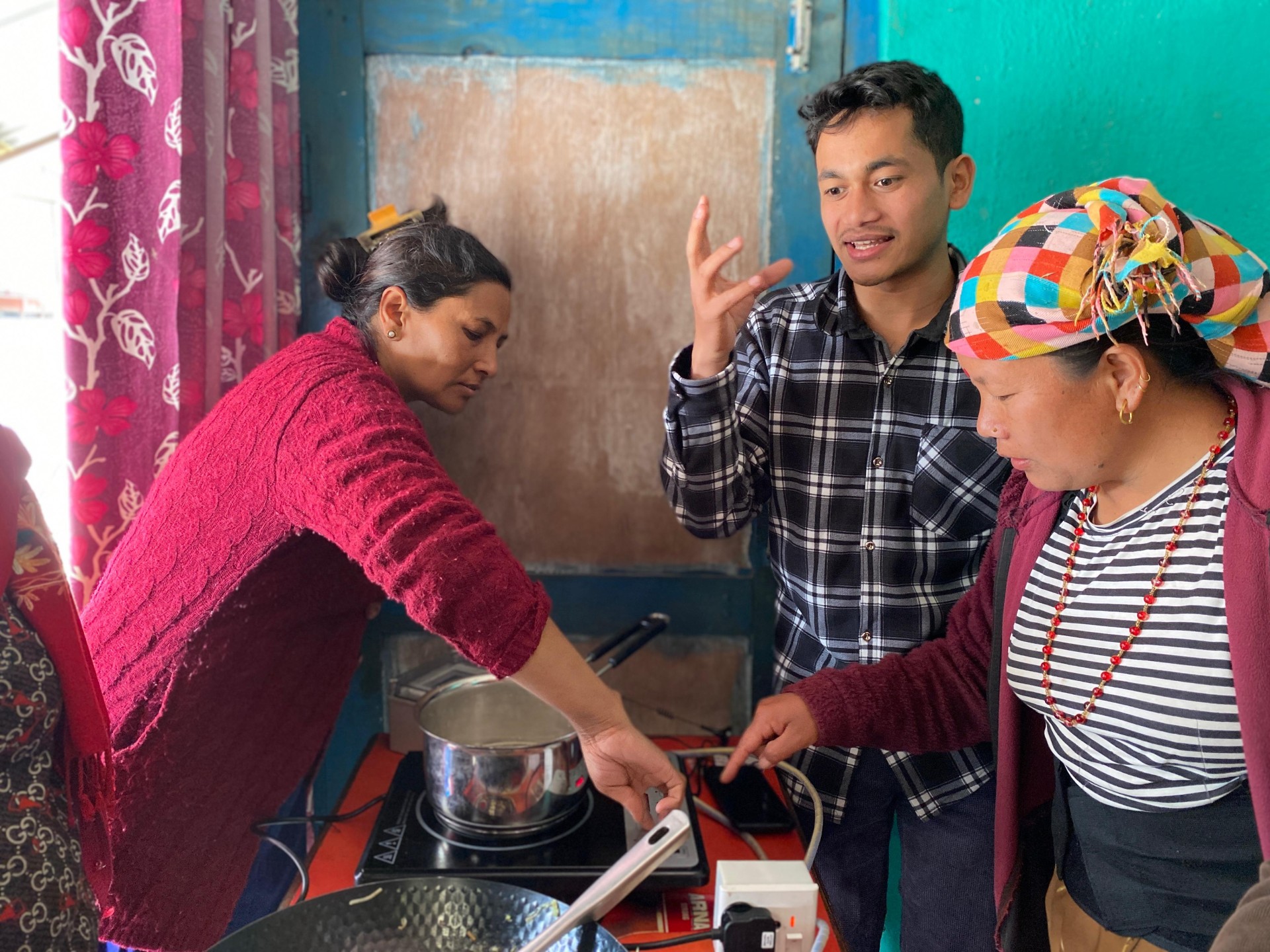A recent workshop in Pokhara brought together key stakeholders to explore how electric cooking, e-mobility, and micro-hydro grid interconnection can drive clean energy transitions in Nepal’s mountain regions.
New Report Out: Exploring the Potential of Small Businesses for E-Cooking Solutions
The potential of e-cooking solutions – both in research and in practice – has been widely recognized. They can improve health, particularly for women, generate cost savings, and create viable business cases for decentralized renewable energy systems such as micro-hydropower (MHP). Yet most research and interventions to date have focused on household-level adoption, leaving a substantial knowledge and experience gap when it comes to small and medium enterprises (SMEs).
In the context of our Innovation Lab Nepal project, and together with our local partners, we have now published a comprehensive report demonstrating the viability of e-cooking solutions for small enterprises – including tea shops, restaurants, and hotels – in the rural municipality of Baglung, Nepal.
Commercial cooking in rural Nepal continues to rely heavily on liquefied petroleum gas (LPG), despite the high availability of small hydropower systems. At the same time, many of the more than 1,800 micro-hydropower projects in the country’s mountain regions suffer from underutilization, threatening their long-term financial sustainability. Promoting commercial e-cooking solutions offers a unique opportunity to combine the benefits already well-documented at the household level with stronger utilization of local MHP systems.
A total of twenty small enterprises in Badigad and Nishikhola participated in the initiative, receiving hands-on training and a structured subsidy model as an incentive. The intervention showed that active participants achieved monthly fuel savings ranging from NPR 81 to NPR 2,000 (USD 0.58 to 14.30). At the same time, it became clear that several challenges remain, including the need for reliable repair and maintenance services for both cookware and stoves, as well as improvements to existing wiring infrastructure.
If you would like to learn more about the potential of e-cooking for SMEs and MHP projects, you can download the full report here.



